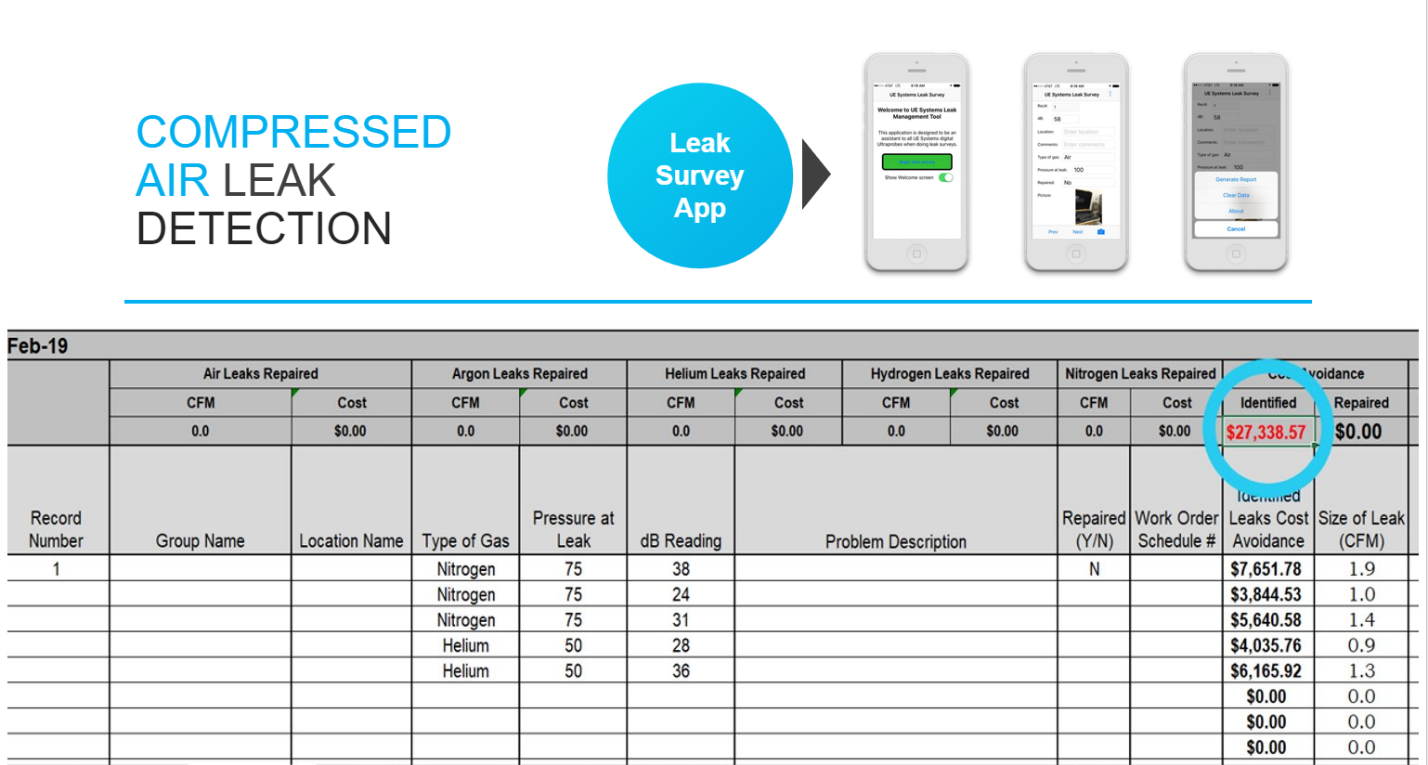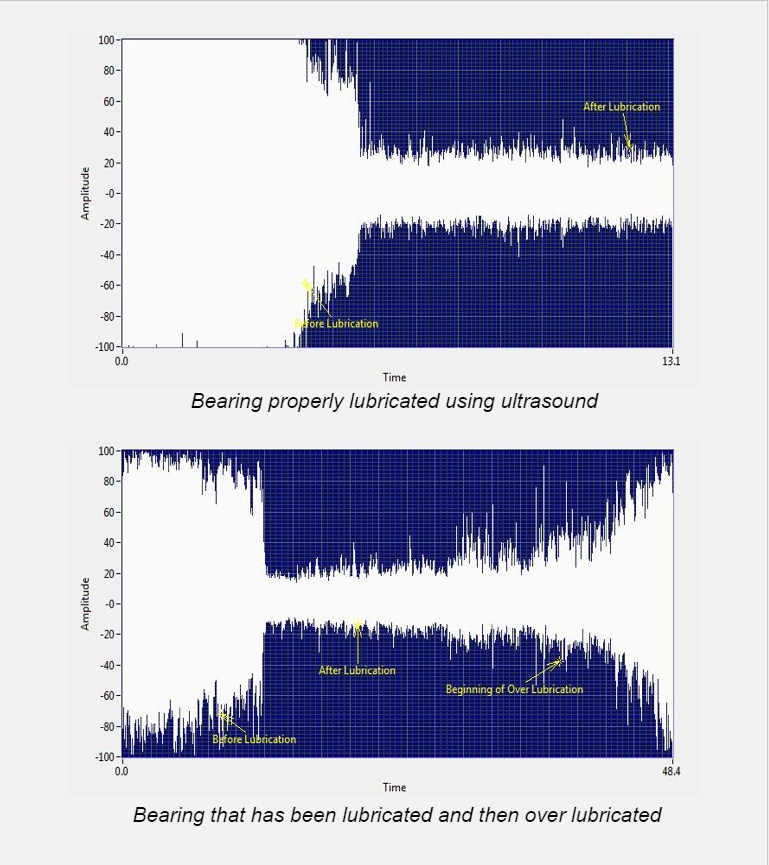 |
Adrian Messer, Manager of US OperationsUE Systems Inc. Ph: 864-224-4517 |
Did you know that an energy efficient facility can be directly linked to its reliability and success? Are you aware of how important it is to consistently report and document results to generate awareness and effectively reduce your energy usage? What about how important it is to be proactive instead of reactive to prevent problems from happening in the first place? Common sense will have you answer these questions with, “Yes,” but the way you run your facility could be suggesting otherwise.
You might be thinking something along the lines of, “I’d like to find a way to be more efficient, but I don’t like change! We don’t have the time to completely reinvent the way we do things! Or, “The way we have been running our business has been working to this point, so why fix what isn’t broken?” Well, if this sounds like you, good luck!
What Is Ultrasound?
By definition, ultrasound is a sound wave with a frequency higher than the upper audible limit of human hearing. Using ultrasonic technology, we can transmit sounds the human ear cannot hear through a process called Heterodyning, which translates the sounds into audible sounds that are then heard in a headset and displayed and stored in one of our UltraProbes. This allows the electrical energy to convert into a unit of measurement for sound on the display, called a decibel level (dB). Essentially, it generates data that suggest an early warning of failure, which then allows you to be proactive and fix the problem before it becomes even more serious and costly. The beautiful thing about ultrasonic frequencies is they can be used in almost any environment and the sound waves are directional, which means they will point you exactly in the right direction where the leak or problem is occurring.
There are 5 easy ways to reduce energy waste using ultrasound technology. These are:
1. Compressed Air Leak Detection
2. Compressed Gas Leak Detection
3. Carbon Footprint Reduction
4. Steam Trap Testing and Inspection
5. Mechanical Efficiency and Friction
If you implement these 5 practices into your facility, you will notice a monumental improvement in the efficiency of your facility, your carbon footprint, and your annual savings.
Compressed Air Leak Detection
Did you know compressed air is a facilities’ most expensive utility? This means testing for and fixing leaks is critical to maintaining good energy efficiency and significant cost savings. In fact, experts have calculated that as much as 30% of all generated compressed air is lost due to leaks. That adds up quickly!
Our ultrasonic equipment will tell you everything you need to know and what course of action to take immediately. We recommend that you use what we call, “Gross to Fine,” method, which is where you start with your UltraProbe at a greater distance from the leak and gradually move closer to narrow the point down as the sound becomes clearer. Eventually, you will find the exact location of the air leak and plan a course of action.
Compressed Gas Leak Detection
As you can see in the chart below, undetected gas leaks can cost you tens of thousands of dollars per year, depending on what type of gas you are using. Specialty gases such as argon, helium, or hydrogen will cost you even more. What seems like a minimal difference day to day turns into something catastrophic over the course of 365 days. While there are obvious financial benefits in preventing gas leaks and further damage, it does not stop there. Gas leaks are not only a safety hazard for employees, but they are also detrimental to the environment. Getting any gas leak under control will give you an instant payback and ensure your facility is running at optimal efficiency for both you and your employees.
Carbon Footprint Reduction
This one is self-explanatory. Electricity and industry, which primarily comes from the burning of fossil fuels for energy, as well as certain chemical reactions that are necessary to produce goods from raw materials, make up for 50% of the total greenhouse gas emissions in the United States. Naturally, no pun intended, the less your carbon footprint weighs the more efficient your facility will be running and the more money that will be saved on electricity and gas emission.
Steam Trap Testing and Inspection
A typical facility can generate steam savings of 20% or more by improving its steam system. Additionally, approximately 20% of the steam leaving a central boiler plant is lost through leaking steam traps in a typical heating system without any proactive assessment programs. Why is this important? First and foremost, over 45% of all fuel burned by US manufacturers is consumed to generate steam. That’s an incredible amount, and savings of 20% or more will make an enormous impact both environmentally and to your wallet.
There are several simple approaches that can be taken with our UltraProbes to pinpoint and reduce leaks. These include insulating steam and condensate return lines, stopping any steam leaks, maintaining steam traps, and being consistent with your routes, testing, and inspection.
Mechanical Efficiency and Friction
Friction is both a good friend and a dangerous enemy. As the saying goes, it’s important to keep your friends close and enemies closer. Friction is the ultimate source of ultrasound, so it is vital to keep a close relationship with friction. While friction is important to pinpoint the exact issue occurring, too much friction can: create excessive heat, contribute to energy loss, utilize a greater amount of power to overcome, cause expansion, cause a bearing or sliding surface to fit tighter, and much more. Some of the biggest culprits of friction is over and under lubricating bearings, using contaminated lubricant, or using the wrong bearing type entirely. In any case, it can be detrimental. With our equipment at UE Systems, structure-borne ultrasound can be easily used to precisely lubricate bearings with the exact amount of grease necessary to ensure your facility will run optimally for longer.
Conclusion
We’ve covered five easy ways to reduce energy waste with ultrasound, but this is just the beginning. If you want your facility running at optimal efficiency, these are the very first steps that you can take to reach that goal. Ultrasound plays a major role in helping reduce energy inefficiencies and is a good reason to incorporate energy management into your reliability program. While the information might seem like a lot at first, energy applications for ultrasound are some of the easiest to use and deploy. Reliable assets help make reliable facilities, and reliable facilities are more likely to be efficient facilities. It is about making more with less and being efficient with your resources.
If you enjoyed learning about ultrasonic technology and would like to get more information or access valuable resources including a sound library, presentations, articles, and more, please visit our website at www.uesystems.com or give us a call at 800.223.1325.



